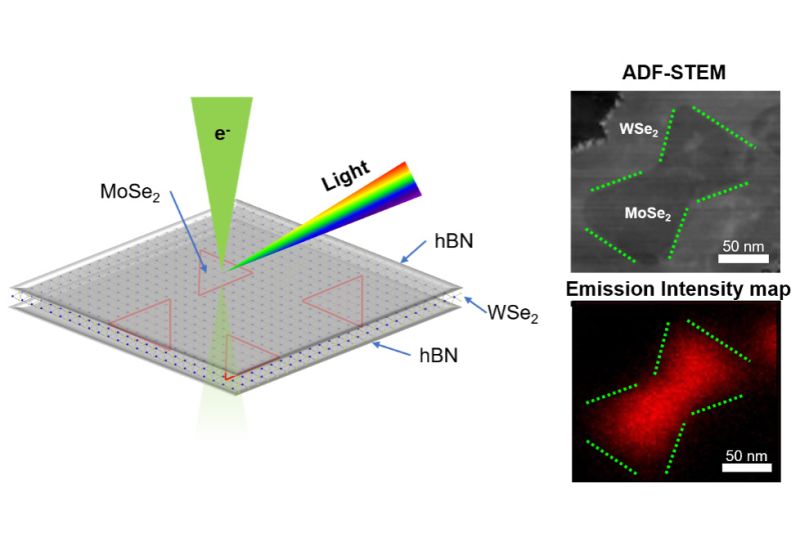
NSF-funded researchers' work on light contributes to nanodot breakthrough
Americans spend a lot of time on their screens. The images on those screens are made of pixels — tiny dots that represent a single point of color. Scientists from Penn State, including NSF Graduate Research Fellow Nicholas Trainer, recently discovered a process that can make the images on phones, monitors and TVs even brighter. Other researchers on the team were also supported by two NSF Faculty Early Career Development awards and used the NSF Materials Innovation Platform at Penn State.
The Penn State research shows that light emitted from 2D materials can be changed by embedding a second, very small (80,000 times smaller than the width of a human hair) 2D material inside them, called a nanodot. By controlling the size of the nanodot through a process called quantum confinement, scientists can change the color and frequency of the emitted light through a process called quantum confinement.

Credit: Nasim Alem, Penn State University
"Think about how OLED [technology used in our digital screens] displays work," says Saiphaneendra Bachu, lead author of the study. "Each pixel has its own tiny light source behind it, so you can control the exact color or brightness of each one. This lets the screen show true black and accurate colors like red, green and blue. If you improve this process, you make the picture much sharper and more vibrant."
The nanodot discovery will have uses beyond sharper and more efficient displays on screens. The "quantum confinement" that the scientists achieved with the nanodots creates a type of fundamental quasiparticle called an "exciton" that transports energy but doesn't carry a charge. Excitons influence how semiconductors behave, and being able to precisely control the excitons (which this new development allows) can lead to faster and more secure quantum computing.
Improved quantum computing has implications for fields ranging from cybersecurity (it could make one's online presence, transactions and the wider web more secure) to developing new materials and drugs to improving the efficiency and accuracy of artificial intelligence/machine learning algorithms.
Distribution channels: Science
Legal Disclaimer:
EIN Presswire provides this news content "as is" without warranty of any kind. We do not accept any responsibility or liability for the accuracy, content, images, videos, licenses, completeness, legality, or reliability of the information contained in this article. If you have any complaints or copyright issues related to this article, kindly contact the author above.
Submit your press release